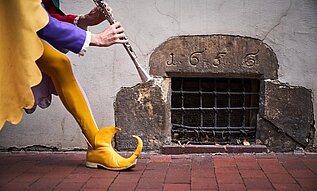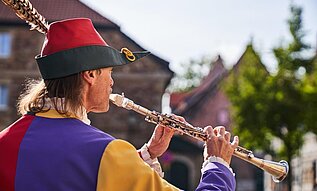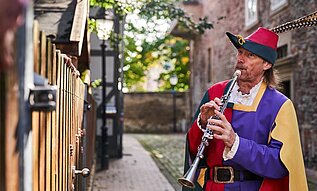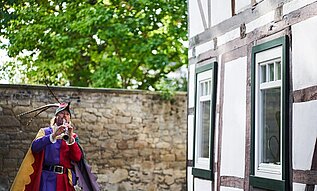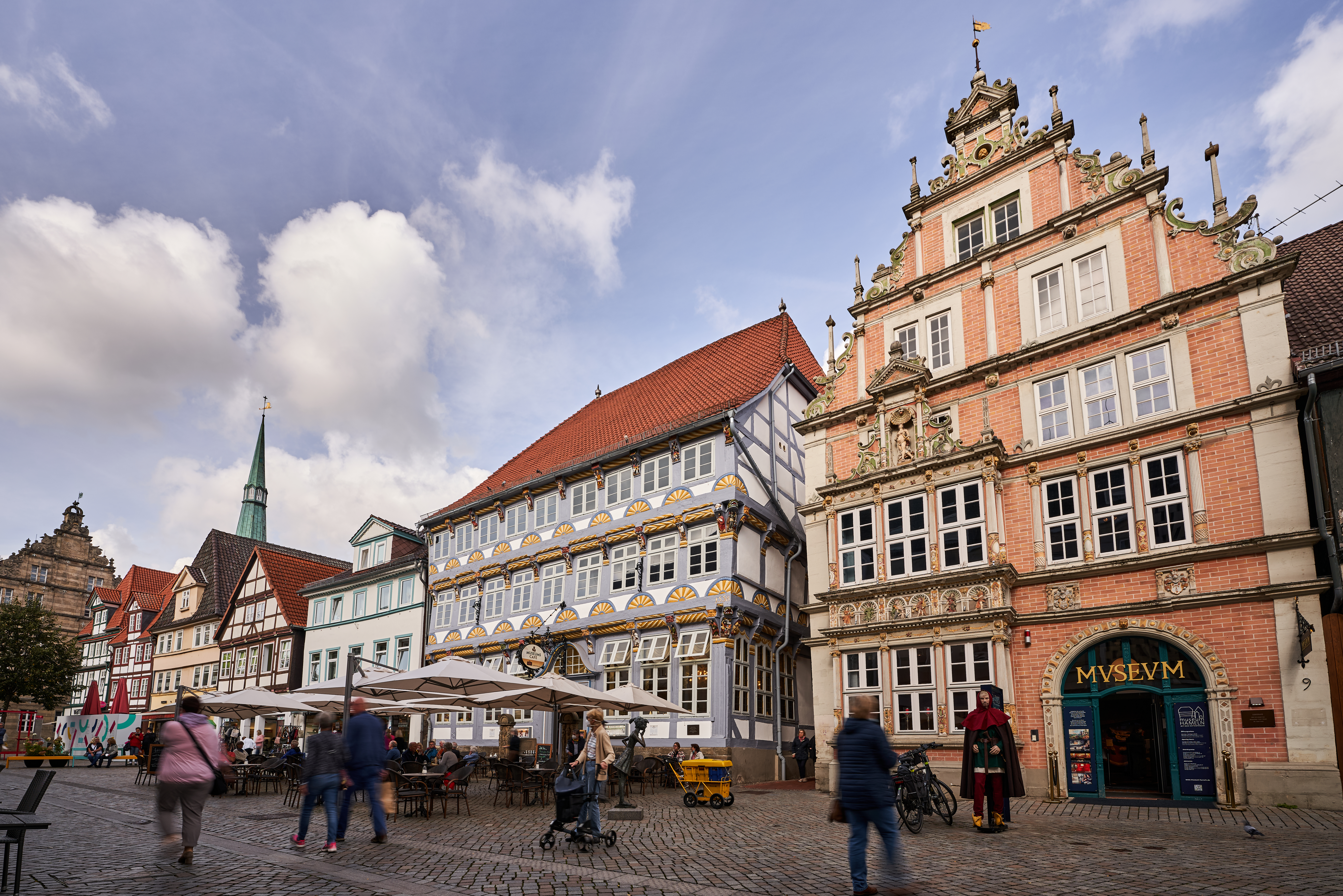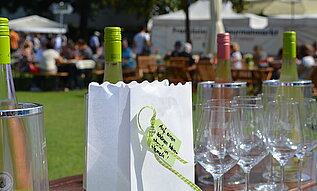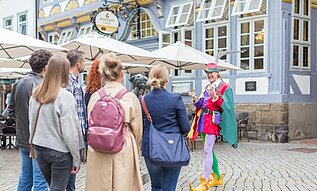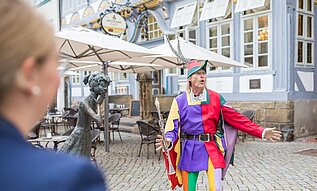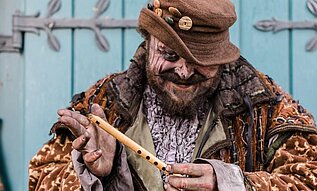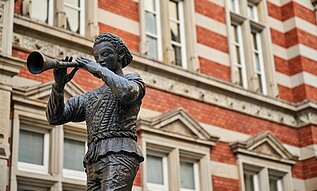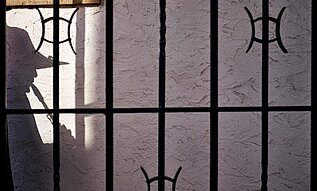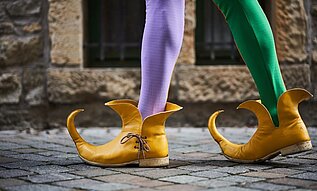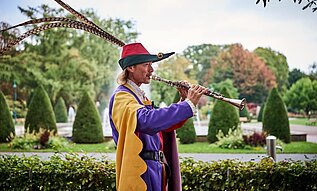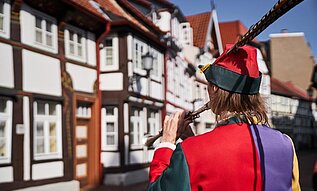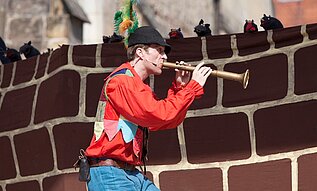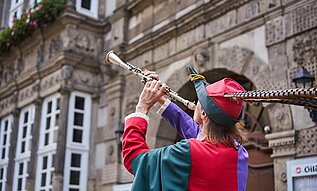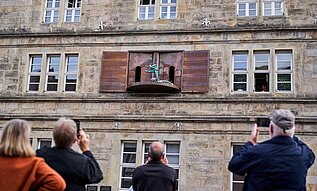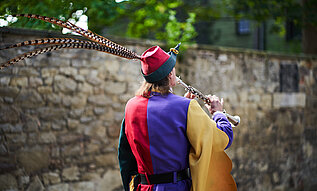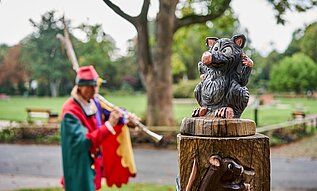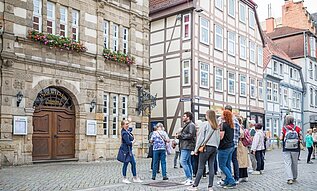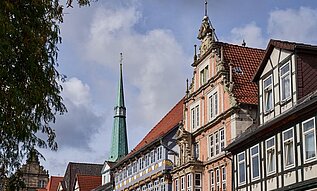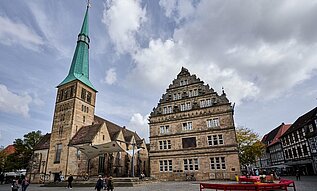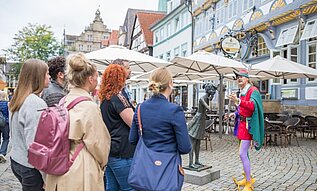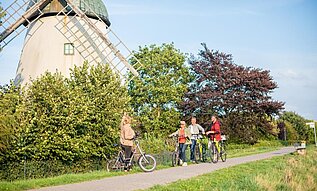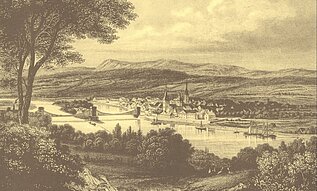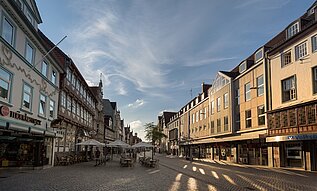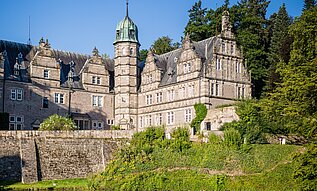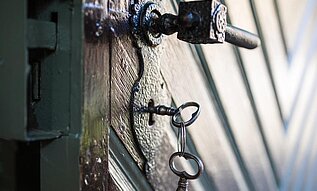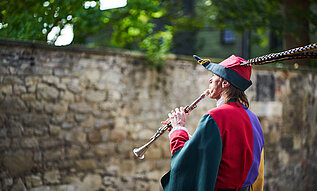Although the tale of the Piper has been enhanced and translated without end, there is a standard version that is probably best known. It appears in the Brothers Grimm collection "German Legends" printed in 1816. The linguist brothers title the story "The Children of Hameln."
It was the year 1284 when a strange and wondrous figure arrived in Hameln. He was attired in a coat of many colours and was taken to be a rat catcher, because he promised to free the town of a plague of rats and mice for a fixed sum of money.
The citizens pledged to pay him his fee, so the visitor produced a pipe and began to play. Soon all the rats and mice came running out of the houses and gathered around the Pied Piper in a teeming mass. Once convinced that each and every one followed, he went out of the town straight into the River Weser where the vermin plunged after him and drowned.
The townspeople however, now freed of the plague, regretted their promise and refused to pay the Piper, who left Hameln in a bitter mood.
On the 26th of June in that year he returned, this time dressed as a huntsman, wearing a grim countenance and a wondrous red hat. While the townsfolk were assembled in the church, he again sounded his pipe in the streets.
This time, it was not rats and mice that came out, but children! A great many boys and girls older than four came running, amoung them the grown-up daughter of the mayor, to be led through the Ostertor gate and into the very heart of a hill where they all disappeared. Only two children returned because they could not keep up: one was blind and could not show where the others had gone, the other dumb and not able to tell the secret. A last little boy had come back to fetch his coat and so escaped the calamity. A total of 130 children were lost.
The road, through which the children were led, was known in the middle of the eighteenth century. (Probably still today) as The Bungelose (drum, toneless, silent), because no music nor dance be allowed there. When a bride was brought to the church with music, the musicians had to remain quiet through this lane. The mountain at Hameln, where the children disappeared, is called the Poppenberg (which was also called Koppenberg), where left and right two stones in cross shape have been erected. Some say the children had been led into a cave and reappeared in Transylvania.
(Brothers Grimm, German Legends, No. 245: "The Children of Hameln")
